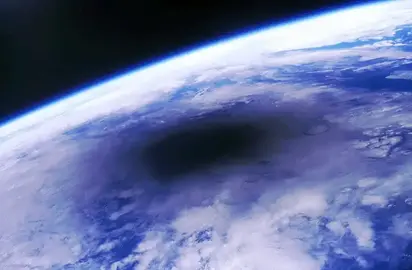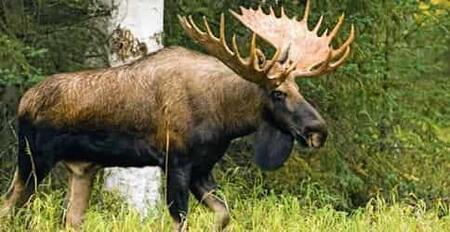With each period of history, more and more representatives of the animal world belong to the species – “Extinct Animals”. This process is especially influenced by such natural phenomena as warming or cooling of the climate. However, in modern times, it is human activity that is more to blame.
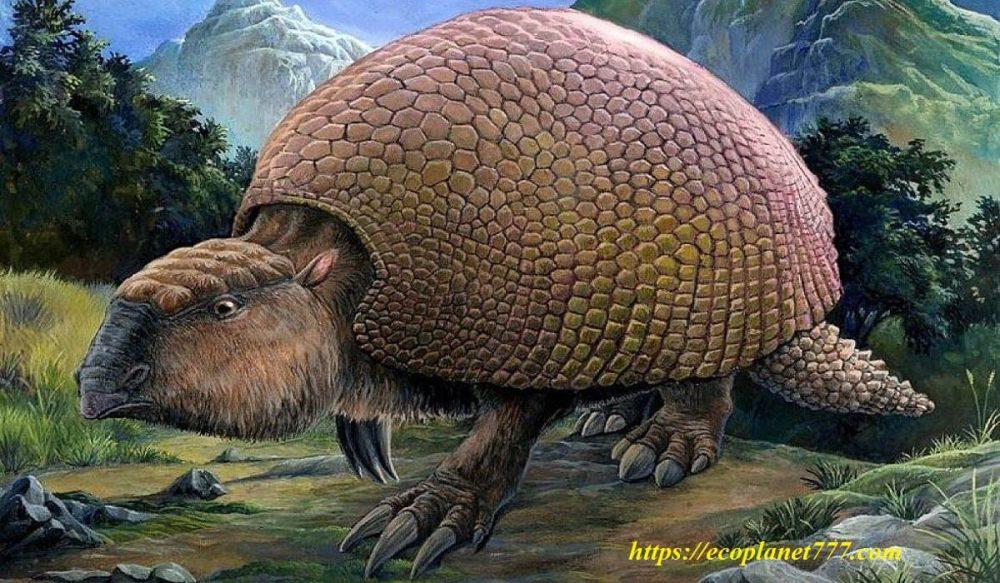
Habitat destruction as farmland expands and deforestation is a major cause of modern extinction, along with pollution, the introduction of alien species, and overfishing or hunting.
Extinct animals
West African black rhinoceros
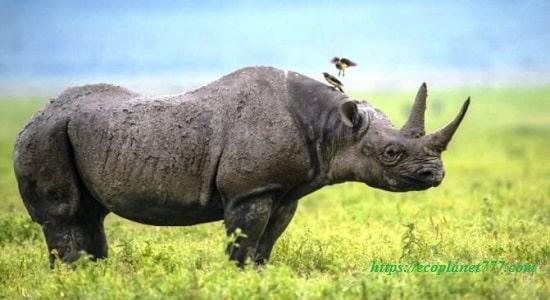
The West African black rhinoceros has been found in several countries in the southeast region of Africa. With a length of 3-3.8 meters and a height of 1.4-1.7 meters, this rhinoceros weighed 800-1300 kg. He had two horns, one measuring 0.5-1.3 meters, and the other from 2 to 55 cm.
The animal’s diet included deciduous plants and shoots. Some people believed that their horns had healing properties (although this had no scientific basis) – which led to mass poaching. Measures were taken to protect the species in the 1930s, but numbers continued to decline.
The last West African black rhinoceros was sighted in Cameroon in 2006. This animal was officially declared extinct in 2011.
Northern white rhinoceros
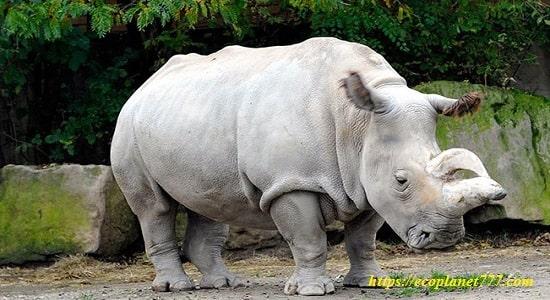
The last two living northern white rhinoceros turned out to be female as the last male died in March 2018 in Sudan.This 45-year-old male was under armed guard in Kenya’s Ol Pejeta Game Reserve until he died of old age and an infectious disease.
Two females cannot give birth, which makes the possibility of a new generation of this animal species unlikely. Scientists are working on using harvested germ cells to breed the extinct northern white rhinoceros in the lab. Poaching and habitat loss have decimated this population.
White dolphin baiji
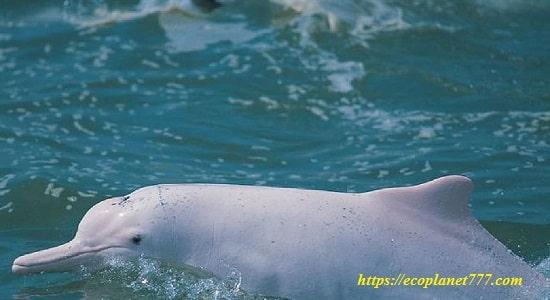
The white dolphin, also called the Chinese river dolphin, could only be found in the Yangtze River in China. These mammals could grow up to 2.5 meters in length and weigh up to a quarter of a ton. They relied on echolocation to navigate and hunt prey due to their tiny eyes and very poor eyesight. Having lived in the Yangtze for 20 million years, their numbers have drastically declined since the 1950s. As China industrialized, the river was used for fishing, transportation, and hydroelectric power generation, which had a huge impact on the animals. Although not officially listed as extinct, no one has seen a Yangtze river dolphin since 2002.
Pyrenean ibex

It is one of four subspecies of the Spanish ibex or Iberian ibex found in the Iberian Peninsula. Capricorn grew to a height of 60-76 cm at the withers and weighed 24-80 kg and fed mainly on grass and herbs. It was believed that historically there were 50,000 of them, but by the early 1900s the number of animals had fallen to less than 100 individuals.
The exact reason for the extinction of the Iberian ibex is unknown; scientists believe that poaching and the inability to compete with other mammals for food and habitat have had the biggest impact. The last Iberian ibex was killed by a fallen tree in northern Spain in 2000. This species is now considered extinct.
Eurasian bison
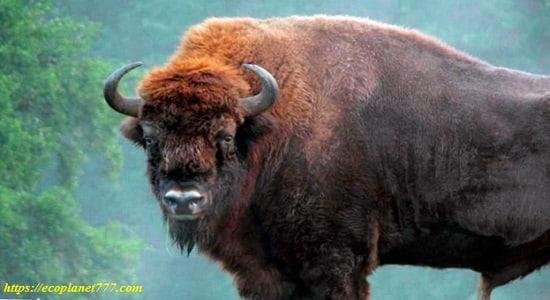
One of the ancestors of modern cattle, the Eurasian aurochs, was a large wild bull that once roamed the steppes of Europe, Siberia, and Central Asia. The Eurasian aurochs, 1.8 meters high at the withers with large, forward-curving horns, were known for their aggressive temperament and fought for sport in ancient Roman arenas. As a game animal, Eurasian aurochs were heavily hunted and gradually became extinct in many parts of their range.
By the 13th century, the population had dwindled so much that the right to hunt them was restricted to nobles and royalty in Eastern Europe. In 1564, gamekeepers registered only 38 animals at a royal survey, and the last known Eurasian bison, a female, died in Poland in 1627 of natural causes.
Passenger pigeon

Native to North America, the passenger or feral pigeon became extinct in the early 20th century. An estimated 3 to 5 billion passenger pigeons inhabited the US when Europeans arrived in North America, but their dispersal led to massive deforestation, resulting in habitat loss and a decline in bird populations.
By the 19th century, pigeon meat had become popular as a cheap meal for the poor, leading to mass hunting. Pigeons were slaughtered by the millions every year for their meat and sent in railroad cars to be sold in city markets. Hunters often raided their nesting sites and destroyed entire colonies in one breeding season.
Since 1870, the decline of the species has become rapid, and several unsuccessful attempts have been made to breed birds in captivity.The last known passenger pigeon, named Martha, died on September 1, 1914 at the Cincinnati Zoo in Ohio. Once famous for its huge migratory flocks that darkened the sky for days, the passenger pigeon was extirpated in the early 1900.
Tasmanian tiger
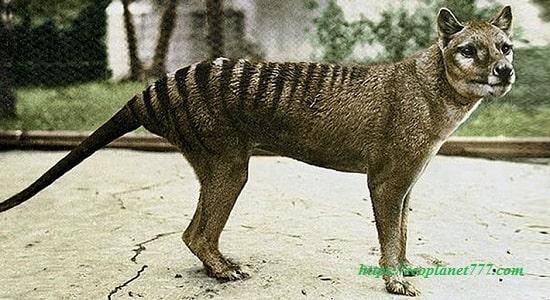
Native to Australia, Tasmania and New Guinea, the Tasmanian tiger was a large carnivorous marsupial. Unrelated to tigers, the creature looked like a medium to large dog (it weighed 30 kg and was almost 2 meters long from nose to tail), but the dark stripes made it look like a tiger.
It is believed that the reason for the extinction of this animal species was that it was actively hunted (generous rewards contributed to this), and human encroachment into its habitat, the appearance of dogs and diseases have made a negative contribution.
The last wild Tasmanian tiger was killed between 1910 and 1920, and the last captive died at Hobart Zoo, Tasmania in 1936. Already in the XX century, this species of animal completely died out.
Steller’s Sea Cow
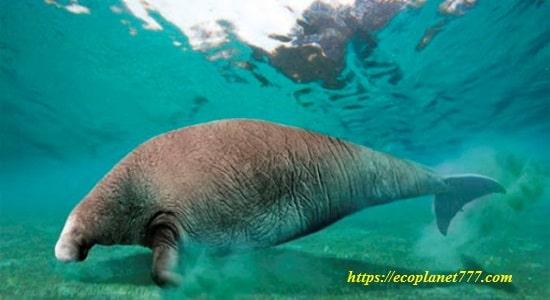
Named after George Steller, the naturalist who discovered the creature in 1741, Steller’s sea cow was a large herbivorous mammal, much larger than modern manatees and dugongs. It is believed that the white-shouldered sea cow, which grew to at least 8-9 meters and weighed about 8-10 tons, lived in the Near Islands, southwest of Alaska and the Commander Islands in the Bering Sea.
It is believed that the mammal spent most of its time eating algae.These massive, docile animals floated on the surface of coastal waters, but, unfortunately, could not dive under water. This made them an easy target for harpoon sealers, who valued them as a source of meat on long sea voyages. This species was extirpated by 1768, less than 30 years after it was first discovered. There are no surviving copies today.
Great auk
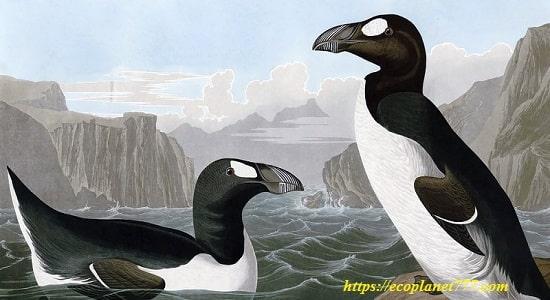
The flightless auk was a flightless seabird that nested in colonies on rocky islands in the North Atlantic, namely St Kilda, the Faroe Islands, Iceland, and Funk Island off Newfoundland. The birds were about 75 cm long and weighed about 5 kg, had short wings that were used for diving.
The great auk was a strong swimmer, which helped it hunt underwater for food. Completely defenseless great auks were killed by predatory hunters for food and profit in the early 1800s. A huge number of birds were caught by sailors, who often drove the birds onto the boards and killed them on the way to the ship’s hold. The last known specimens were killed in June 1844 on Eldey Island in Iceland for the museum collection.
Dodo or Dodo
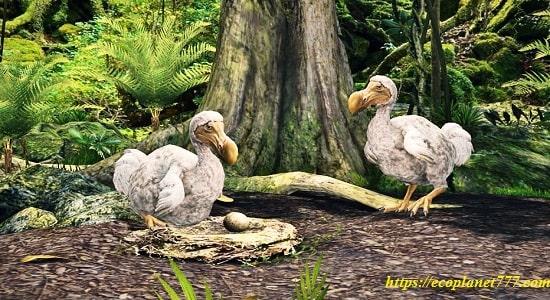
These flightless, ground-nesting birds once inhabited the island of Mauritius in the Indian Ocean. Larger than turkeys, dodos weighed about 18-23 kg, about a meter in height, had gray-blue plumage and a large head. The only thing known about the bird’s appearance is from various illustrations and written accounts from the 17th century, so its exact appearance remains uncertain. It is hypothesized that the bird became flightless due to the presence of abundant food sources (seeds, roots, and fallen fruits) and the relative absence of predators.
Dutch sailors first discovered the dodo in 1598. They quickly decimated their population as an easy source of fresh meat for their travels.The colonization of the island by monkeys, pigs and rats proved disastrous for these birds, as the mammals feasted on their vulnerable eggs. The last dodo was killed in 1681. Today, the species is considered completely extinct animals.
Woolly mammoth
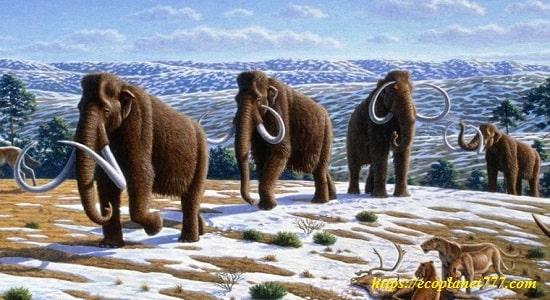
Due to the large number of well-preserved frozen carcasses of this ancient extinct species in Siberia, the woolly mammoth is the most famous of all mammoth species. An enormous mammal believed to be closely related to the modern elephant. The ancestors of this ancient animal migrated from Africa about 3.5 million years ago, spreading across northern Eurasia and North America.
The creature was over 4 meters tall and could have weighed over 6 tons. They were covered in fur, and their curved tusks could easily reach 5 meters in length! The woolly mammoth eventually disappeared 10,000 years ago due to a combination of human hunting and the loss of its habitat due to climate change.
The last of the isolated populations of woolly mammoths is believed to have disappeared from Wrangel Island in the Arctic Ocean around 1700 BC.
Extinct animals saber-toothed tiger

Often referred to as saber-toothed tigers or saber-toothed lions, these ancient species existed from 55 million to 11,700 years ago. Saber-toothed cats were predators, so named because of the elongated fangs, which in some species reached 50 cm in length. They resembled bears in physique, were considered excellent hunters and hunted animals such as sloths and mammoths.
These cats could open their mouths at an angle of 120 degrees – almost twice as wide as that of a modern lion! It is believed that the extinct animals of saber-toothed cats may be related to the decline and extinction of the large herbivores they hunted. Other explanations include climate change and competition from humans.
Smooth hand fish

A now-extinct smooth handfish that was abundant in the waters around Australia just 200 years ago. Named for its uncanny resemblance to human hands, the smooth tame fish that was declared extinct in 2020 also had a punk-rock mohawk-like spike on its head.
While the ultimate cause of extinction is unknown, scientists speculate that habitat loss and the destructive hunting of other marine life (such as scallops) are responsible for their demise.
White-eye

Green-yellow-white tropical forest bird of the lowlands of Guam, which was 10 cm long, with a prominent eye ring. It became extinct due to constant hunting by the invasive brown tree snake.
White-billed woodpecker
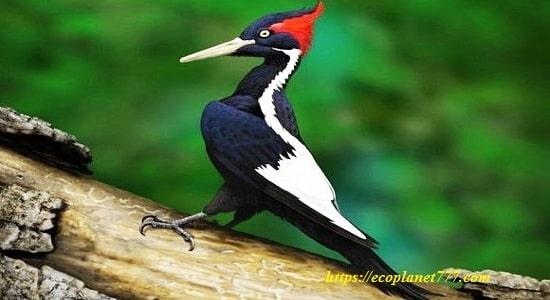
The world’s third largest white-billed woodpecker once flew in old growth forests in 13 states. Including Arkansas, Florida, Georgia, Illinois, Kentucky, Louisiana, Mississippi, Missouri, North Carolina, Oklahoma, South Carolina, Tennessee, and Texas. The last confirmed sighting was in 1944, despite extensive searches, after which the species was classified as “extinct animals“.
Little marian bat
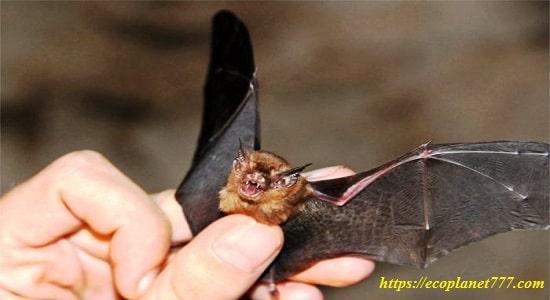
Also known as the flying fox, the little Mariana fruit bat lived in Guam and fed on tropical fruits. She was last seen in 1968, after which she is considered extinct animals.
For many years, we have experienced a huge loss of biodiversity due to climate change, disease, pollution, invasive species and habitat loss, as a result of agricultural development and industrialization.
Human activities now threaten more species than ever before, and the global rate of extinction of animal species is already at least tens to hundreds of times higher than the average over the past 10 million years.
Globally, one in four animal species is estimated to be vulnerable, which means that about 1 million species are on the verge of extinction, some of which may disappear in the coming decades.
P.S.
If you liked this information and found it useful, please share it on social media. networks with your friends and acquaintances. This is how you support our project “Ecology of Life” and make your contribution to the preservation of the environment!
- Magnetic storms: the sun is testing the planet🌪️ - 13.06.2024
- Why You Should Drink Chicory: Benefits and Harms 🌿 - 09.06.2024
- Innovative Choice: Sproud Milk – Your Ideal Plant-Based Drink 🌱 - 03.06.2024


